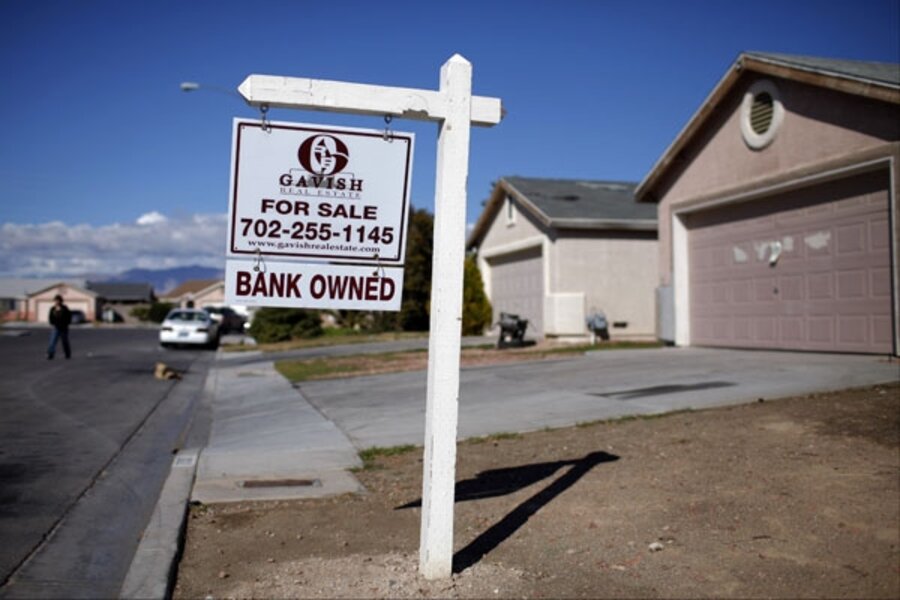Regulatory revamp for lending industry
Loading...
| Washington
The Obama administration said Monday that it will seek to overhaul the business of selling investments made from mortgage loans, a marketplace that provided the funding for the housing boom and the tinder for a financial crisis by tying American subdivisions to global markets.
The proposal, part of a regulatory blueprint scheduled to be unveiled Wednesday, would give buyers more information while requiring sellers to share in losses. Officials said the combination will encourage responsible lending, create safer investments and renew the flow of funding for mortgages and other loans.
Lenders would be required to retain at least 5 percent of the risk of losses on each package of loan pieces, known as an asset-backed security.
The employees and contractors who originate loans would be paid gradually, and they could get less if borrowers started to default.
The proposal also takes aim at ratings agencies such as Moody’s and Standard and Poor’s, which investors rely upon to evaluate the quality of asset-backed securities. Those agencies would be required to make clear to investors that the securities are riskier than traditional investments such as corporate bonds.
These changes address the market at the heart of the financial crisis, but they make up only a small piece of the administration’s blueprint. The plan would give the Federal Reserve new powers to restrict the risks taken by large financial firms. It would create a new authority to dismantle firms that fall into trouble and a separate agency to protect consumers of financial products such as mortgages and credit cards.
Many pieces of the proposal would require legislation.
Sales of asset-backed securities provided the bulk of funding for mortgages and other consumer lending during the economic boom, as investors spent trillions of dollars buying what was often advertised as a safe, more lucrative alternative to ordinary bonds. The process was lucrative for banks, which could quickly sell loans and use the money for new lending. It was lucrative for Wall Street, which collected fees on each transaction. And it was lucrative for investors, who made outsized profits.
But as borrowers began to default on the underlying loans, the value of the securities collapsed, and everything came tumbling down.
The administration concluded that securitization encouraged looser lending standards, because companies that sold loans to investors had little reason to care whether borrowers could repay those loans. Furthermore, employees were paid to make loans, but they were not penalized for defaults. And investors could not easily check the excesses because they lacked basic information about the contents of each security.
The result? “A serious market failure that fed the housing boom and deepened the housing bust,” according to Treasury Department spokesman Andrew Williams.
The administration’s proposal is not just an attempt to clean up the securitization market. The goal is also to help revive that market, which has seen almost no activity in the last year.
That goal was welcomed by industry groups, even as they cautioned that some details needed further examination.
“There may be parts of this proposal where the industry disagrees, but we pledge to work closely with the administration and global policymakers on this vital topic,” said George Miller, executive director of the American Securitization Forum.
The proposal assigns a key role to the Securities and Exchange Commission, which regulates the sale of securities. In addition to requiring increased disclosures about the contents of each security, the agency also would expand its database of corporate bond issues to include asset-backed securities. And the SEC would encourage the adoption of standardized contract language to reduce confusion and allow investors to compare securities more easily.
A second component focuses on the credit rating agencies, which have faced criticism for assigning their safest grades to hundreds of securities that ended up losing large portions of their value because they contained mortgage loans that borrowers could not afford. The proposal would require a clear distinction between the ratings assigned to asset-backed securities and other forms of debt such as corporate bonds. The agencies also would be required to disclose more information about their methodology, and about conflicts of interest. Generally, the agencies are paid by the company that issues the security.
The final component addresses financial incentives, for instance requiring firms to retain a stake in each security. The plan also would prohibit firms from hedging that risk, meaning that they could not make an offsetting investment. The European Union plans to adopt a similar requirement, an important consideration because firms could easily shift the sale of asset-backed securities to a less restrictive marketplace.
But some officials and financial experts still are skeptical about the requirement. They note that lenders often kept a piece of their securitizations during the housing boom, either as a desirable investment or because it could not be sold. This retained risk was a key source of the losses that crippled Citigroup and other banks.





